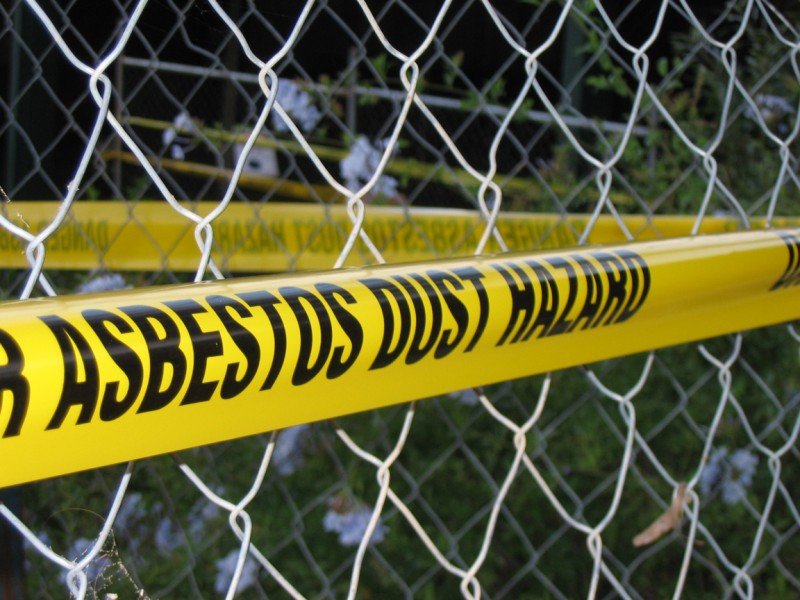By Paul Phillips
 We are often given little or no lead-in time to mobilise our resources for large or complex programmes of asbestos surveying. It appears that the procurement of an asbestos survey team is often something of an afterthought, which is shunted-in at the last minute a few days before a project starts if we are lucky. This does not give us adequate time to resource the project properly and often our surveyors start work without the requisite site inductions that would be considered standard health and safety practice for other trades.
We are often given little or no lead-in time to mobilise our resources for large or complex programmes of asbestos surveying. It appears that the procurement of an asbestos survey team is often something of an afterthought, which is shunted-in at the last minute a few days before a project starts if we are lucky. This does not give us adequate time to resource the project properly and often our surveyors start work without the requisite site inductions that would be considered standard health and safety practice for other trades.
Guidance on the planning of a programme of asbestos surveys is published by HSE in Chapter 4 of HSG 264 (Survey Planning) which states:
“For house improvement schemes and other project work, refurbishment and demolition surveys should be incorporated into the planning phase of such work as far as possible. This will avoid delays and disruption etc. Where the work is urgent (e.g. essential or emergency maintenance, repair and installation), the refurbishment surveys may have to be carried out just before the work itself. Surveys should be performed with due diligence.”
We would suggest that the client should, if possible, give the asbestos consultant at least two weeks to prepare and plan the work.
HSE also encourage consultants to carry out desktop and pilot studies before embarking upon a significant survey programme. Giving the consultant time to perform these tasks will be time well spent and may well have a much greater impact on reducing programme in the long run. In Para 79 of HSG 264 it lists the information that should be collected by the surveyor for the desktop study: This will typically include:
- Plans, documents, reports and surveys on design, structure and construction.
- Location of services, heating and ventilation ducts, plant rooms, riser shafts and lift shafts.
- Historical info i.e. Details about whether the buildings have been extended, adapted or refurbished, and if they have, when the work was done.
- Whether the premises are vacant or occupied
- Any restrictions on access and the responsibility and arrangements for access.
- How survey damage is to be made good (refurbishment/demolition surveys).
- Site-specific hazards (mechanical, electrical, chemical etc).
- Details of any previous asbestos surveys, current asbestos registers and all records of asbestos removal or repairs.
- Information on possible repairs to ACMs, e.g. pipe/thermal insulation.
- Contacts for operational or health and safety issues.
We appreciate that all of this information may not be readily available but a few hours of research or discussions with the client i.e. Landlord, Local Authority or RSL could enable the asbestos survey phase to be planned and executed more efficiently.
Alongside the desktop study, the consultant should also be given the time and resources to carry out a pilot study of each property archetype before the programme begins. It enables them to evaluate issues regarding access of certain voids in advance which can be planned into the survey methodology to minimise or manage the incidence of exclusions and ultimately reduce overall programme.
Pilot studies can also provide the surveyor with some pre warning or indication of what ACMs they could be dealing with and whether this could have some issues with programme, scope of works. i.e. asbestos insulation board – 14 day ASB5 notifications.
A lead-in phase for the asbestos surveyor need not exceed two weeks but could have a disproportionately beneficial impact on overall programme and help streamline relations between the occupants, other contractors and any third parties.
Paul Phillips is operations manager at asbestos consultancy Global Environmental
This is the first of a series of blogs which discuss the latest issues in asbestos management. Next week Paul will be explaining best practice and latest techniques used to sample asbestos materials during the survey.
What makes us susceptible to burnout?
In this episode of the Safety & Health Podcast, ‘Burnout, stress and being human’, Heather Beach is joined by Stacy Thomson to discuss burnout, perfectionism and how to deal with burnout as an individual, as management and as an organisation.
We provide an insight on how to tackle burnout and why mental health is such a taboo subject, particularly in the workplace.



Plenty of useful information on ‘planning for asbestos’, thank you for sharing.
The article could be summed up easily using a direct quote from the very first sentence of Section 4 ‘Survey Planning’ of HSG264 – Paragraph 70 – ‘The key to an effective survey is the planning’. It is only through effective planning and preparation including suitable liaison with the client and/or principal contractor that the agreed scope of the survey can be agreed. This would include identifying the purpose for the survey to be undertaken and the intended outcomes, the specification and extent of the contractors works, the agreed occupation during the inspection, the phasing of subsequent inspections, and the… Read more »